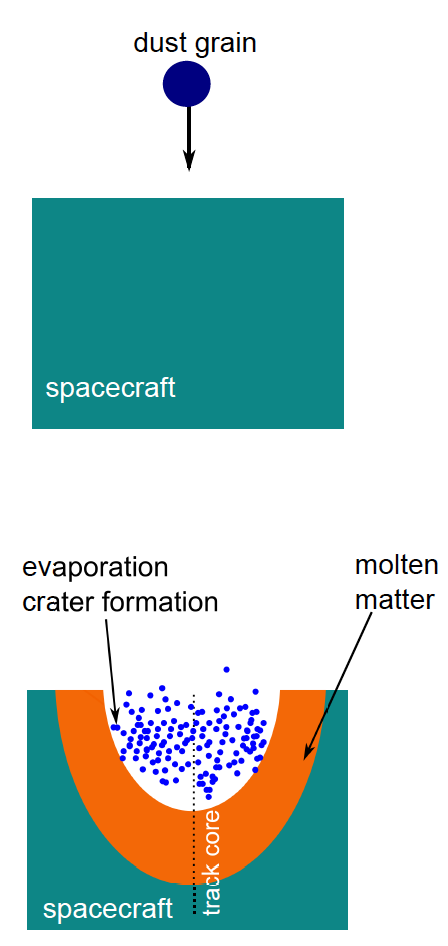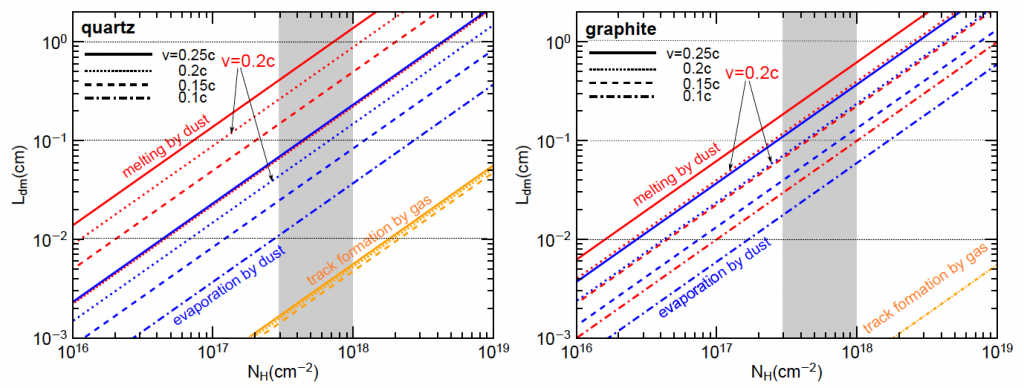Title: The Interaction of Relativistic Spacecrafts with the Interstellar Medium
Authors: Thiem Hoang, A. Lazarian, Blakesley Burkhart, and Abraham Loeb
First Author’s Institution: Canadian Institute for Theoretical Astrophysics, University of Toronto
On the doorstep of the Solar System…
On its voyage to Pluto, the New Horizons probe broke the speed record for a spacecraft (and anything humans have ever created, for that matter), traveling at a blistering speed 40 times faster than a bullet. However, even at these Earth-shattering speeds, it would take New Horizons about 75,000 years to reach the distance of Proxima Centauri, the nearest star to our Sun. And now that we know this star has a potentially habitable Earth-like planet orbiting it, tens of thousands of years is just too long to wait.
Thankfully, physicist Steven Hawking, adventure capitalist Yuri Milner, and Facebook CEO Mark Zuckerberg concocted a better idea. They put their great minds (and loads of money) together to propose the Breakthrough Starshot initiative, a plan to send a fleet of centimeter-sized spacecrafts to the nearest star system. These spacecraft would be accelerated to a significant fraction of the speed of light by the force of radiation pressure from high-powered, Earth-based lasers and light sail technology. Breakthrough Starshot claims that the technology will be developed to accelerate these spacecrafts to 1/5th the speed of light, which means it would only take a quick 20 years to travel the 4 light-years to Proxima Centauri. However, every great idea has complications. Today we’ll confront one of the biggest ones: all that stuff that is between Earth and Proxima Centauri.

Artist’s rendition of the light sail of Project Starshot. Courtesy of Breakthrough Initiatives.
Another one bites the space dust
On average, the interstellar medium (ISM) has only 1 atom inside of every cubic centimeter of space. However, a 1-square-centimeter spacecraft would still run about into two million trillion on its way to Proxima Centauri. Coincidently, this is about the number of atoms contained in a single grain of salt. Though getting hit with a grain of salt’s worth of atoms over the course of the journey doesn’t seem all too detrimental, keep in mind that the spacecraft are charging at these atoms at a fifth the speed of light, so that the spacecraft sees the atoms incoming at 60 million meters per second! These tiny atomic bullets can still alter the material structure of the spacecraft by creating microscopic holes, and heat up the spacecraft material by imparting their kinetic energy to atoms of the spacecraft. If the bullet is bigger (say, grains of interstellar dust, which are typically made up of a few molecules and are about 1000 times larger in diameter than atoms), the bigger the kinetic energy of the impact. Hoang et al. analyze the effects that the gas and dust on the way the Proxima Centauri would have on the Starshot spacecraft.

Explosive evaporation of spacecraft material, in the frame of reference of the spacecraft. Figure from today’s article.
By studying the affects of gas and dust bombardment on quartz and graphite, the authors gauged which particles would be the most detrimental to the spacecraft, how they would affect the spacecraft, and what protective measures could possibly be done to reduce damage. First they analyzed the effect of interstellar gas. Though hydrogen and helium make up most of the material in the ISM, they found that the heavier and rarer atoms (such as oxygen) would have a more notable effect on the trip to Proxima Centauri. These atoms could produce tiny holes in the spacecraft, called damage tracks, that would penetrate up to a tenth of a millimeter deep.
Dust, though less plentiful than gas in the ISM, was found to be more harmful to the spacecraft over the course of the trip. Collision by a normal interstellar dust grain could provide enough energy to evaporate material at the impact site – known as explosive evaporation. Furthermore, the atoms at the impact site become ionized, and the energetic electrons can then transfer their kinetic energy to nearby atoms on the spacecraft, raising the heat of this material. Over the course of the journey to Proxima, the impact of such dust could result in a half-millimeter layer of the spacecraft to be completely eroded, which is larger than it sounds, since these are only centimeter-scale spacecraft. Subsequent melting from these dust collisions could result in damage another couple millimeters deeper into the material. The figure below shows some of the main results of the study, plotting the damage by dust and gas on material moving through the ISM at different fractions of the speed of light.

The thickness of surface damaged by dust and gas bombardment for quartz (left) and graphite (right). The x-axis plots the column density (the amount of material along a given line of sight between an observer and an object), with the grey band indicating the column density expected towards Proxima Centauri. Though evaporation by dust is material-independent, graphite is a better conductor which lessens melting by dust and track formation by gas. Figure from today’s article.
What if the spacecraft was unfortunate enough to encounter an abnormally large dust grain? The authors found that grains larger than the width of a silk fiber would completely destroy the gram-scale spacecraft (for reference, the average interstellar dust molecule is about 1000 times smaller than this). However, since such large grains are quite rare, they found this concern to be negligible. Based on the quantity of these abnormally large grains in the ISM, the chance that one of these spacecraft would encounter such a grain on its journey to Proxima Centauri is 10^-50, which is so incredibly unlikely that I can’t even think of a real-world analogy.
Interstellar dust buster
So what can we do about this dusty problem? Hoang et al. propose multiple means of protection, such as deflecting the incoming dust grains with an electric field or scattering them off the path of the spacecraft with the radiation pressure of little lasers. However, the best approaches seem to be the simplest. Adding a thin layer of highly-conducting material, such as graphite or beryllium, to the front of the spacecraft would prevent the track formation from gas bombardment. Though it would add weight to the spacecraft, if this layer is a few millimeters thick it would also protect the sensitive components of the spacecraft from explosive cratering and melting by dust. The authors stress that geometrical considerations should also be taken into account. If the spacecraft are needle-like, then they have a smaller cross-sectional area for gas and dust to impact.
Though something important to consider, the hindrance of gas and dust on the way to Proxima Centauri is not a deal-breaker for the Starshot initiative. The biggest test will be testing our patience, because though 25 years is a blink of the eye for our Universe, I can’t say it is the same for me.





> 10^-50, which is so incredibly unlikely that I can’t even think of a real-world analogy.
Imagine a lottery where one person on Earth is chosen at random every day for 5 days. The odds of winning that lottery all 5 days is close to 10^-50.
Love it! Lottery examples can certainly be useful, regardless of the order of magnitude 🙂
Very interesting article and comment above. I realize it is out of the scope of this article, but I was curious how they plan to decelerate these tiny spaceships? If the sails require powerful lasers to speed up, presumably the light from Proxima C. wouldn’t be strong enough to slow them down?
Hi Tom,
The plan isn’t to decelerate at all! These would just be a fly-by mission, similar in a sense to New Horizon’s fly-by of Pluto. The only way they can accelerate to those speeds is by high-powered, focused laser light. The light from a star would have no chance of decelerating these spacecraft down from 0.2c with its radiation pressure.
A bit of redundancy, meaning multiple spacecraft, would also be helpful in completing the mission.
The plan of the mission is to send hundreds of tiny spacecrafts, to offer redundancy.